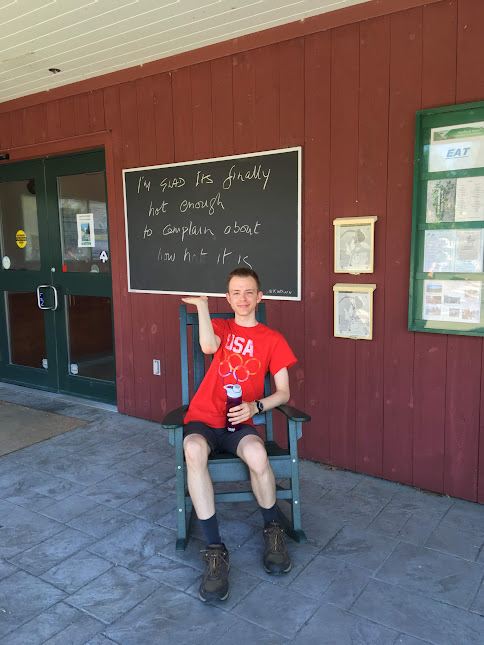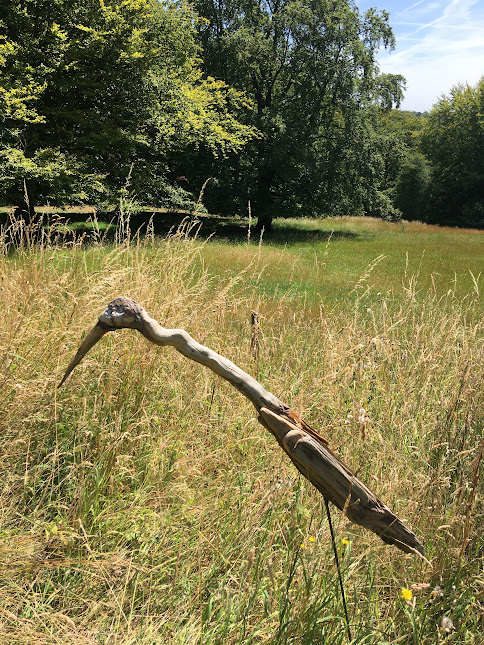This Week’s Bit of String: Melting paint on a cemetery fence
After freshman year in high school, I got a state-funded job with other local teens to help out around the community. We were a bunch that had, shall we say, sometimes got in trouble, and this might keep us on the straight and narrow for the summer. There was a lot of volleyball in downtime, and trips to the corner store for Cool Ranch Doritos.
On the hottest summer day, we were in the sun repainting a cemetery fence. The metalwork was rusty and the old paint was peeling, but we went right over it. It was 103 Fahrenheit. The paint didn’t dry, it congealed, green and sticky. I remember the smell of it, and through the bars all the flowers wilted, perishing against the gravestones, cicadas strumming frantically like overstressed refrigerators. Our Doritos did not feel very cool.

The following week we learned that a classmate died that day, of heat stroke at Easter Seals camp. Those memories are bundled together for me: that sweet boy, the stultifying heat, the sticky paint, the graves.
Whether accompanied by tragedy or not, extreme weather can serve as bookmarks in our memory’s manuscript. Can you quite easily recollect and recreate your most stifling or humid moments? And your iciest ones, or the ones when you got caught in downpours?
Literature to Cool Off By
You can probably name some great books that incorporate weather, too. Recently, I was thinking of The Siege by Helen Dunmore and how cold I felt reading that. Another chilling one is Smilla’s Sense of Snow by Peter Hoeg, set in Greenland. Tales of Shackleton’s journey, the cold, miserable mud of the front in World War I that oozes in at the end of A.S. Byatt’s The Children’s Book.
Maybe you’re like my husband and you insist a hot cup of tea will cool you down. There are plenty of high-temperature reads, from the jungles in Louis de Berniere’s trilogy starting with The War of Don Emanuel’s Nether Parts, to the suffocating false politeness of small-town Missouri in Gillian Flynn’s Sharp Objects, to the powerful storms for which Zora Neale Hurston named her novel, Their Eyes Were Watching God.

I find that weather helps to mark out stories in my writing, too. When working on short stories, imagery is such an integral part of the whole. Using particular climate and setting conditions can launch us into the mood of a piece. It’s easier to get creative describing something extreme than something ordinary, so if you had a bit of a rant or therapeutic scribble while you were hot this week, see if you can put it to use in a story one day.
My first published story, in the Bristol Short Story Prize Anthology 2010, was about a little girl in Haiti, before and after the earthquake in January of that year. To invent the character and her life, I relied not only on research but also on memory from my own visits, seared into my mind by the heat. Dusty roads, cracked skin, ceiling fans powered by generators through rolling blackouts, springtime temperatures at least as hot as the July fence-painting ones in New England. Once it clouded over, but the rain seemed to shrink as it fell and evaporate before hitting the ground.
Braving It
Weather can inspire us beyond just prose development. It forces us to build resilience. I’ve started wearing shorts in public, and shedding even my lightest cardigans. If I can be brave enough to show my somewhat un-toned arms and un-tanned legs, what else can I find the courage to attempt?
During the hottest days this week, our parched British region very nearly reached 100 Fahrenheit, and the upper floor of the comprehensive secondary school where I work DEFINITELY reached it. We couldn’t cancel school because there is no county provision to do so. We relocated classes, cramming all our students into the lower 2/3 of the building. The administration generously allowed them to wear PE kits instead of full uniform if they wanted.

There was little relief downstairs, though. I resigned myself to living in a constantly-replenishing fountain of sweat. There was no way to look my best around teenagers who can sometimes be harsh critics. I don’t think anyone cared, though. We were all in it together. They weren’t exactly looking or certainly smelling like roses, themselves.
At the end of each boiling schoolday, I walked home in the blazing sun, grateful that at least I was in open air. Then I parked myself in front of the fan, curtains firmly drawn, and compiled editing notes for my novel. Being all about Eve and taking place in the Fertile Crescent of the Middle East, it’s got some high-temperature prose, but I was listening to the Frozen soundtracks which I think helped.
In one of Sarah Tinsley’s Scribbles virtual workshops recently, the theme was Heat, and I reflected in my notebook on how our emergency procedures for hot days might match our methods for interacting with the world: Rise very early when it’s quiet, open all the windows and doors to let the cool air in. Then shut everything down as soon as the sun starts to get through. Complete all tasks in darkness. Don’t venture out in search of an oasis because if we were entitled to one, it surely would have appeared already.
But what’s the worst that could happen, if we let in the sun? We might slow down, lie motionless, expose what we deem undesirable. We’d risk being seen, and falling behind. If everyone else is just as hot and tired though, who is there to judge, or to pull ahead?
Just a thought. I hope you’re able to take these opportunities to, if not feel more brave and inspired, at least feel accepting of yourself. We’re all doing our best, sweating through it.